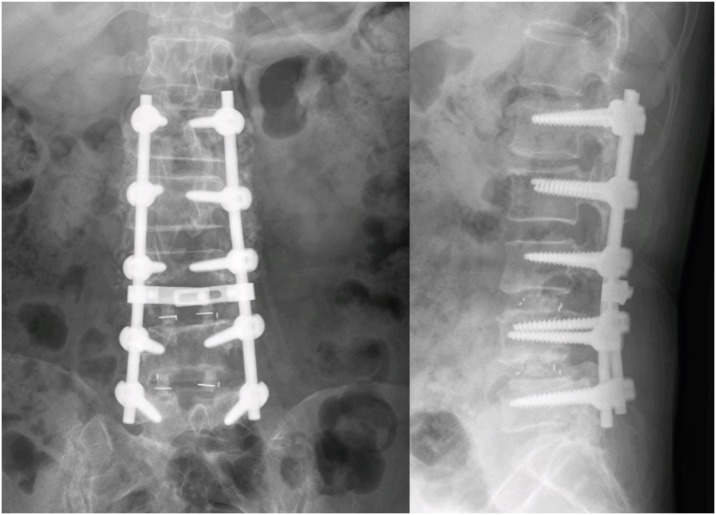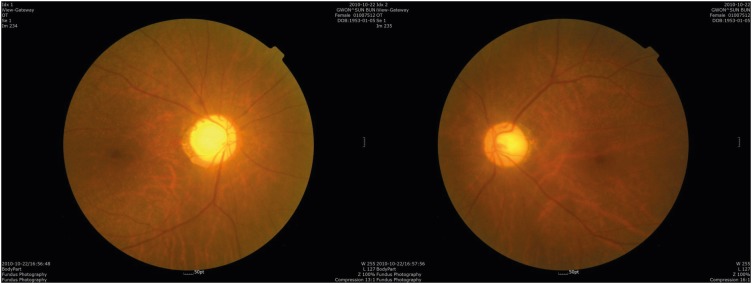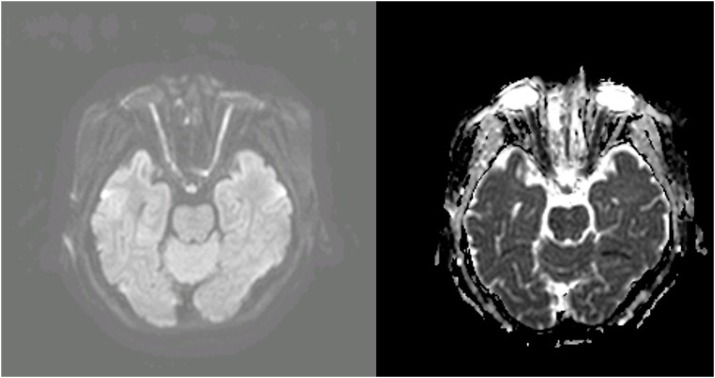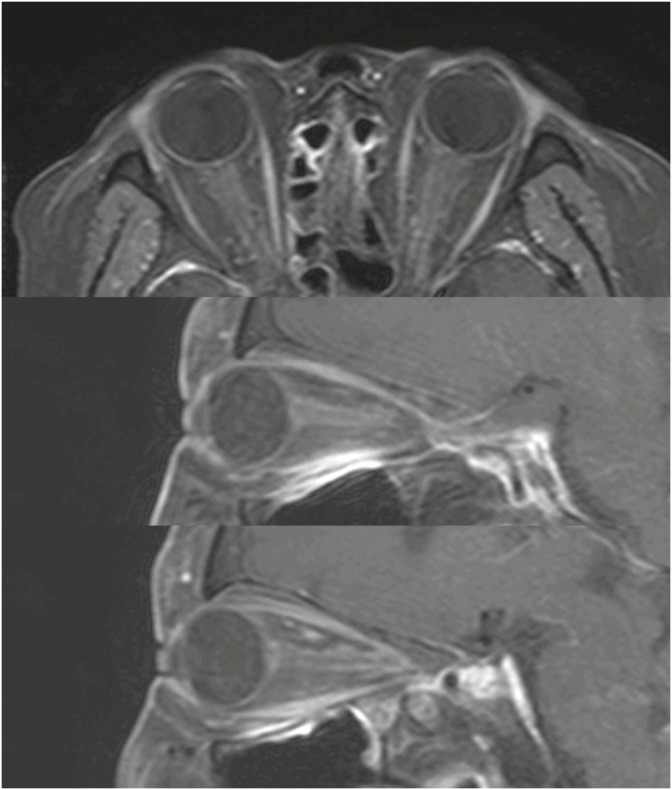Korean J Neurotrauma.
2019 Oct;15(2):221-226. 10.13004/kjnt.2019.15.e39.
Cushing Syndrome: A Potential Risk of Bilateral Postoperative Ischemic Optic Neuropathy after Lumbar Fusion
- Affiliations
-
- 1Department of Neurosurgery, College of Medicine, Chungnam National University, Daejeon, Korea. swchoi@cnu.ac.kr
- KMID: 2461132
- DOI: http://doi.org/10.13004/kjnt.2019.15.e39
Abstract
- This is a report of a 58-year-old female with Cushing syndrome who underwent posterior lumbar fusion and lost both her vision completely. She was diagnosed with posterior ischemic optic neuropathy. Cushingoid features such as buffalo hump and central obesity might have attributed in triggering posterior ischemic optic neuropathy. When laid prone for surgery, perioperative high abdominal pressure causes venous hypertension leading to increase amount of blood loss. To compensate, infusion of large quantities of intravenous fluids is necessary which leads to hemodilution which decreases ocular perfusion pressure. Hypercoagulability of Cushing syndrome is also potentially a risk factor of this condition which increases the incidence of venous thromboembolism. For there is no known effective treatment for posterior ischemic optic neuropathy, means to prevent this complication must be strategically reviewed. When performing long spine surgery on patient who has Cushing syndrome or cushingoid features, caution must be taken to avoid this devastating complication.
MeSH Terms
Figure
Reference
-
1. Baig MN, Lubow M, Immesoete P, Bergese SD, Hamdy EA, Mendel E. Vision loss after spine surgery: review of the literature and recommendations. Neurosurg Focus. 2007; 23:E15.
Article2. Chabre O. Cushing syndrome: Physiopathology, etiology and principles of therapy. Presse Med. 2014; 43:376–392. PMID: 24656295.3. Chaudhry HS, Singh G. Cushing syndrome. Treasure Island, FL: StatPearls Publishing;2019.4. Coelho MC, Santos CV, Vieira Neto L, Gadelha MR. Adverse effects of glucocorticoids: coagulopathy. Eur J Endocrinol. 2015; 173:M11–M21. PMID: 25971647.
Article5. Cota D, Ceroni L, Pasquali R. Steroid therapy and adrenal function. Recenti Prog Med. 2000; 91:594–600. PMID: 11125954.6. Dunker S, Hsu HY, Sebag J, Sadun AA. Perioperative risk factors for posterior ischemic optic neuropathy. J Am Coll Surg. 2002; 194:705–710. PMID: 12081060.7. Epstein NE. Perioperative visual loss following prone spinal surgery: a review. Surg Neurol Int. 2016; 7(Suppl 13):S347–S360. PMID: 27274409.
Article8. Goepfert CE, Ifune C, Tempelhoff R. Ischemic optic neuropathy: are we any further? Curr Opin Anaesthesiol. 2010; 23:582–587. PMID: 20802327.
Article9. Goyal A, Elminawy M, Alvi MA, Long TR, Chen JJ, Bradley E, et al. Ischemic optic neuropathy following spine surgery: Case control analysis and systematic review of the literature. Spine. 2019; 44:1087–1096. PMID: 30817727.10. Han IH, Son DW, Nam KH, Choi BK, Song GS. The effect of body mass index on intra-abdominal pressure and blood loss in lumbar spine surgery. J Korean Neurosurg Soc. 2012; 51:81–85. PMID: 22500198.
Article11. Holland EG, Taylor AT. Glucocorticoids in clinical practice. J Fam Pract. 1991; 32:512–519. PMID: 2022941.12. Kajitani M, Tsuzaki K. Steroid. Masui. 2016; 65:1119–1124. PMID: 30351800.13. Katz DM, Trobe JD, Cornblath WT, Kline LB. Ischemic optic neuropathy after lumbar spine surgery. Arch Ophthalmol. 1994; 112:925–931. PMID: 8031272.
Article14. Lee LA, Newman NJ, Wagner TA, Dettori JR, Dettori NJ. Postoperative ischemic optic neuropathy. Spine. 2010; 35(Suppl):S105–S116. PMID: 20407342.
Article15. Malhotra A, Gupta V, Abraham M, Punetha P, Bundela Y. Quantifying the amount of bleeding and associated changes in intra-abdominal pressure and mean airway pressure in patients undergoing lumbar fixation surgeries: a comparison of three positioning systems. Asian Spine J. 2016; 10:199–204. PMID: 27114757.
Article16. Roth S, Moss HE. Update on perioperative ischemic optic neuropathy associated with non-ophthalmic surgery. Front Neurol. 2018; 9:557. PMID: 30042726.
Article17. Stevens WR, Glazer PA, Kelley SD, Lietman TM, Bradford DS. Ophthalmic complications after spinal surgery. Spine. 1997; 22:1319–1324. PMID: 9201834.
Article
- Full Text Links
- Actions
-
Cited
- CITED
-
- Close
- Share
- Similar articles
-
- The Etiology of Optic Neuropathy
- Diffusion MR Imaging of Postoperative Bilateral Acute Ischemic Optic Neuropathy
- A Case of Non-Arteritic Anterior Ischemic Optic Neuropathy after Bilateral Selective Neck Dissection
- A Case of Anterior Ischemic Optic Neuropathy
- RE: Diffusion MR Imaging of Postoperative Bilateral Acute Ischemic Optic Neuropathy





